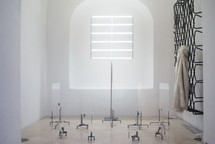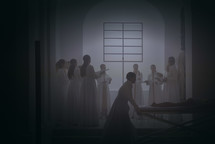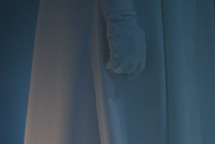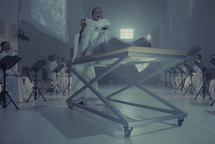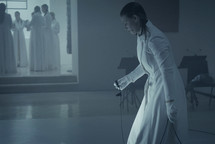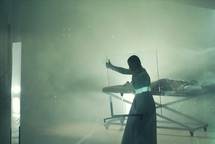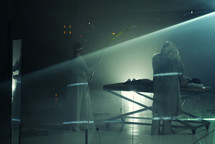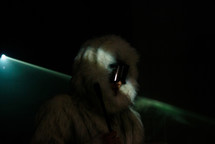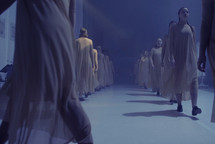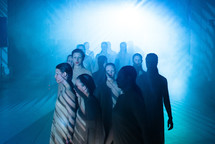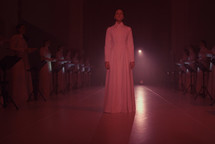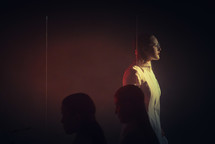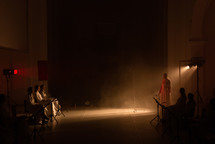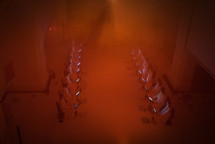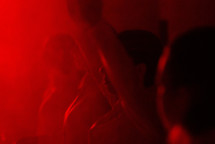Threnos (for the Throat)
As another weeping washes over, we close our eyes
Press
… THRENOS (for the Throat) is an exciting piece not only because of the ritual in which it engages the audience, but also because it has a strong message. The notion of understanding nature and reflection of society through the metaphor of mourning animals, stands as an experience in which connection is assured. Also the musical composition stands out as a invocation for communities, and for beauty that is given an inspirational interspace for internal reflection by the strong formality of the staging. (Jury of Music Thetare Now 2021)… THRENOS (for the Throat) is an exciting piece not only because of the ritual in which it engages the audience, but also because it has a strong message. The notion of understanding nature and reflection of society through the metaphor of mourning animals, stands as an experience in which connection is assured. Also the musical composition stands out as a invocation for communities, and for beauty that is given an inspirational interspace for internal reflection by the strong formality of the staging. (Jury of Music Thetare Now 2021)
…
Threnos (for the Throat) is a masterly example of exciting music theatre, brimming with surreal moments, deeply emotive and gripping." (ARTS TALK MAGAZINE, NL, 2020)
… THRENOS (for the Throat) is an exciting piece not only because of the ritual in which it engages the audience, but also because it has a strong message. The notion of understanding nature and reflection of society through the metaphor of mourning animals, stands as an experience in which connection is assured. Also the musical composition stands out as a invocation for communities, and for beauty that is given an inspirational interspace for internal reflection by the strong formality of the staging.(Jury of Music Thetare Now 2021)
... the projects in the production of CS keep amazing us with their attunement with the topical issues, often anticipating certain themes which we later bring to life in reality. ... (Večer, 2020)
The industrialization of death manifests itself in the play with repetitiveness, mechanics, laboratory sterility, minimalism ... and this applies to music as well as to choreography, costume design and set design. (Delo, 2020)
... The performers, musicians with their presence and execuition once again showed the polyvalence of their talents and abilities ... (Večer, 2020)
…Threnos once again reminded us of the excellence of the Carmina Slovenica, and of its exploring of all the boundaries of music and the stage. The exciting meta-composition and suggestive execution functioned powerfully and convincingly in all its elements. ... (Večer, 2000)
... it is a questioning of the contemporary social paradigm in which man, by excessive praising of his own culture, almost completely destroys nature. This further leads to the reflection of how nature can nevertheless survive, perhaps even without man, and whether, as a consequence, this human-machine relationship can bring us a different view of the man-animal relationship. This human-machine-animal triangle is, in the extreme, interfering with human issues and placing them as some naked lawless bodies in the global processes of control and killing. This also guided the staging that leans on these spaces. The sonic processing of the human voice represents this aspect of the "machine" and is reminiscent of the fragility and vulnerability of the human and animal voice, as well as of some kind of expansion of life, or of the living as a whole ... (Delo, 2020)
Download
- Dora Malech: Threnos - poetry [docx, 20 KB]
- DELO interview, 2020 [docx, 17 KB]
- VEČER interview, 2020 [docx, 26 KB]
- stgw_/Thrnosknjizica_a3_2.pdf [pdf, 481 KB]

